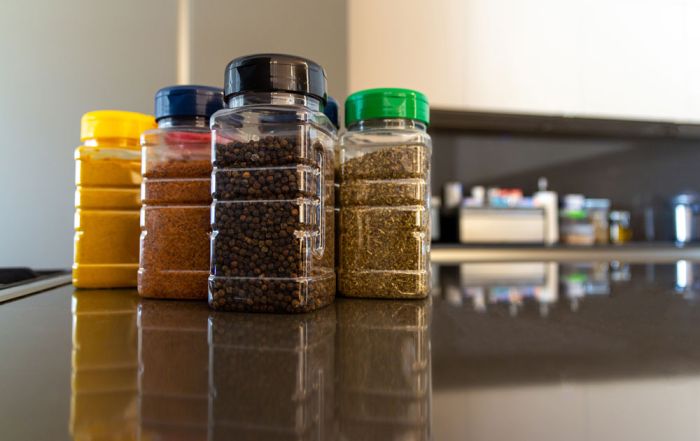When Temperatures Rise, Keep Food Safety Top of Mind
Summer brings a welcome increase in business for many restaurants, catering services, and event venues. It certainly did for the restaurant that I used to manage. With outdoor dining, festivals, weddings, and seasonal traffic, foodservice operations often experience their busiest stretch between Memorial Day and Labor Day. And the warmer weather creates ideal conditions for bacteria to grow quickly.
In our restaurant, it was even more of a challenge because our back kitchen was not air-conditioned. With the heat at the peak of summer often reaching the high 80s, our back kitchen would often top the 100-degree mark.
The Centers for Disease Control and Prevention does note that foodborne illness rates tend to spike during summer months. Keep in mind these rates are heavily influenced by consumer food preparation, and the average consumer does tend to prepare food outside more during the summer, which is away from refrigeration and water sources that are important for handwashing and general cleanliness. Anecdotally, it also seems that most tend to neglect to use thermometers when grilling or barbequing, which also contributes to this increase in foodborne illness rates.
That doesn’t mean that those of us in foodservice are off the hook. While the spike in foodborne illnesses during the summer is influenced by consumers, warmer temperatures create ideal conditions for bacteria to grow rapidly, and busy kitchens may find it harder to maintain strict time and temperature controls. And for those kitchens that have poor or no air-conditioning, like the back kitchen at the restaurant I managed, it is even more problematic. We also tend to see an increase in off-site and outdoor catering requests during the summer, which are always challenging for food safety, just as they are for the average person grilling outdoors at home. For foodservice operators, now is the time to double down on best practices to protect your customers.
…Maintaining proper temperatures is one of the most effective ways to prevent foodborne illness. Cold foods must be kept at 41°F (5°C) or below, while hot foods must stay at 135°F (57°C) or above.
Maintaining proper temperatures is one of the most effective ways to prevent foodborne illness. Cold foods must be kept at 41°F (5°C) or below, while hot foods must stay at 135°F (57°C) or above. Use calibrated thermometers regularly and ensure holding units and refrigeration equipment are functioning correctly, especially on those hot days when they’re under more strain.
Remind staff that the “danger zone” between 41°F and 135°F is where bacteria multiply rapidly. Even short exposures, such as during delivery, prepping, or buffet service, can be risky if not closely monitored.
If you’re offering outdoor dining or catering for off-site events, take extra precautions. Transport perishable items in insulated containers with ice packs or refrigeration units. At events, ensure you have safe food handling stations with handwashing access, and always cover food to protect it from insects and environmental contaminants.
With staff turnover often higher in summer, especially with seasonal hires, consistent hygiene practices can slip. Conduct brief, regular refreshers on handwashing procedures, glove use, and staying home when sick. Providing accessible handwashing stations and fully stocked hygiene supplies can go a long way in helping to improve proper food safety practices and helping employees to maintain compliance with identified standards.
Encourage a culture where safety comes first. I know this is something we seem to include in most of our blogs, but it is vital to ensuring proper food safety in your establishment. Empower your team to speak up if they see something concerning, and reward attention to detail.
Now is a great time to revisit your food safety plan and ensure staff are trained and procedures are up to date. Consider a mid-season check-in to evaluate what’s working and what might need adjustment during peak operations. Risk Nothing.
READ MORE POSTS
Cross Contamination and the Surfaces that go Unnoticed
In October, I ran across a new research study published in the Journal of Food Protection in early-September. The article explored cross contamination in consumer kitchens during meal preparation. One of the authors was a previous SafeBites presenter, Dr. Ellen Shumaker, at North Carolina State University. Although the setting was consumer kitchens and not the commercial kitchen many of you deal with daily, the findings were very applicable to what we often see in the foodservice setting.
Emergency Preparedness: The Not-so Calm After the Storm
If you and your foodservice operation have been hit by an emergency or other disaster, what comes next and how do you move forward? Much of the answer to this is predicated on the actual disaster that you are dealing with – a flood is certainly a much different than a fire, but some of the food safety considerations remain the same if your business has been left intact and has not been damaged by the disaster.
Emergency Preparedness and Responding to a Disaster with Food Safety in Mind
As I write the first blog this month, the realities of the devastation in Florida are coming to light as we also deal with the aftermath of Hurricane Fiona, which impacted Puerto Rico late in September. Recent news has been focused on the recovery efforts for all who have been impacted. Thus, I thought it would be fitting this month to discuss emergency disaster planning resources in our first blog and delve into recovering from a disaster in our second blog later this month.
During National Food Safety Education Month is it time for Your Food Safety Refresher?
You see them in every restaurant and commercial foodservice operation across the United States. Framed and proudly displayed, often by the kitchen, the cashier, the kitchen entrance, or the service counter - just as they should be. To what am I referring? The food safety certification certificates, of course!










